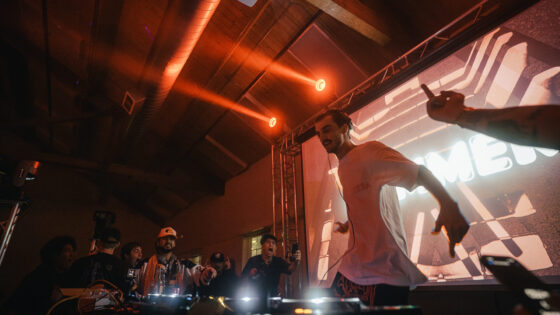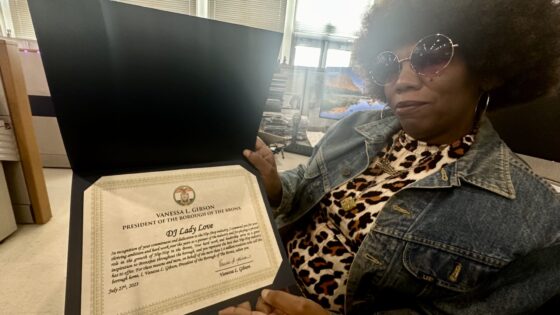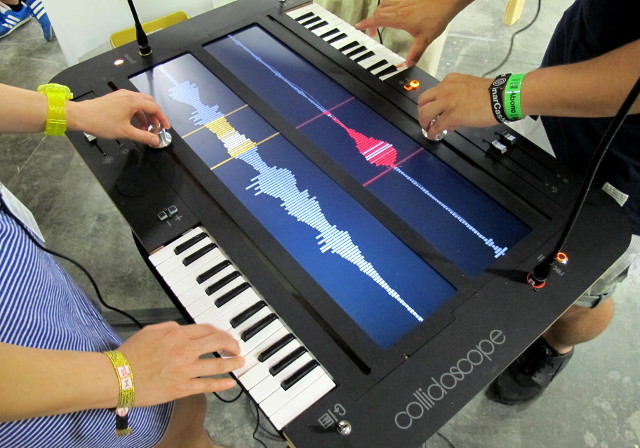“Starting by recording the world around you into Collidoscope – your voice, the old thumb piano or the crackling of a crisp packet – in the blink of an eye those become malleable material for your creativity.”
Here’s a brief refresher on granular synthesis. Granular Synthesis involves recording a sound into software that breaks it down into tiny “grains” lasting only milliseconds. Then the grains can be rearranged or reorganized to create brand new sounds. Once created, those sounds are mapped to your keyboard.
Most music production software has a granular synth built in. Ableton’s Sampler has a granulizer, and Granite by Sonic Arts is a fantastic VST/AU plugin. What sets Collidoscope apart (beyond the fact that it’s real) is that up to four separate people can control it by hand. The controls allow for changes to grain size, waveform position, pitch, and more. It also sports a built-in microphone for recording grain source sounds.
Think of Collidoscope as a musical microscope that allows you to zoom into sounds and explore their beautiful peculiarities, and in the next moment, to play and perform your sonic discoveries like a musical instrument. Collidoscope is designed to be explored in collaboration, and up to four participants can simultaneously collaborate as explorers, sound designers and performers.
The Collidoscope project is created by Ben Bengler and Fiore Martin, researchers at the Queen Mary of London Centre for Digital Music. The Centre’s interactional research themes include encouraging collective action with and through sound. The Centre also focuses on audio engineering, machine listening, and music informatics.
In short, it’s a crazy place where awesome people research cool new ways to bring music, sound, audio, and tech together. Where do we sign up?
You can follow the Collidoscope Project on Twitter here. We’ll have more updates on the Collidoscope Project as we receive them.
Important things happen in Pacific Northwest nightlife, and DMNW will send you alerts!

































